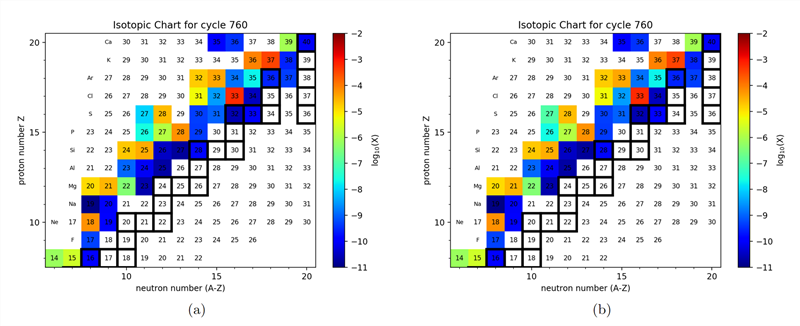Home / News / Latest News
21 07, 2023
Scientists Derive New Reaction Rate for Rapid Proton Capture Process
Type I X-ray bursts are the most frequent types of thermonuclear stellar explosions in the Galaxy. As the key nucleosynthesis process in X-ray bursts, the rapid proton capture process (rp-process) is always the important scientific frontier in nuclear astrophysics. 26P(p,γ)27S reaction is one of the key nuclear reactions in rp-process, and its accuracy is crucial for comprehensively understanding the reaction path of rp-process in X-ray bursts.
Recently, an international nuclear astrophysical team led by HOU Suqing (Institute of Modern Physics, Chinese Academy of Sciences) has successfully derived the 26P(p,γ)27S reaction rate based on the latest nuclear mass of sulfur-27.
Other institutions involved in the study include the Hungarian Academy of Sciences (Hungary), the University of Hull (UK), the Michigan State University (US), and the Texas A&M University-Commerce (US).
Researchers found that the 26P(p,γ)27S reaction rate is dominated by a direct capture reaction mechanism rather than resonant capture. It is found that the new rate is overall smaller than the other previous rates from the statistical model by at least 1 order of magnitude in the temperature range of X-ray burst interest.
The rp-process calculations show that the ratio of isotope abundances of sulfur-27/phosphorus-26 when adopting the new rates is smaller by a factor of 10 than that using the rates from the Joint Institute for Nuclear Astrophysics reaction rate database (Reaclib). In addition, the accumulated material on the phosphorus-26 nucleus is larger than that on sulfur-27 during the whole rp-process episode.
This work was supported by National Key R&D Program of China, the Strategic Priority Research Program of CAS and the Youth Innovation Promotion Association of CAS.

Figure. Distribution of isotope abundances when the rp-process ends. Panel (a) is for the case using the new forward and reverse rates of 26P(p,γ)27S, while panel (b) is for the case adopting the ths8 rates. (Image from The Astrophysical Journal)
Appendix(s):
Contact Information
Institute of Modern Physics
Email: fangliu@impcas.ac.cn



 甘公网安备 62010202000713号
甘公网安备 62010202000713号


